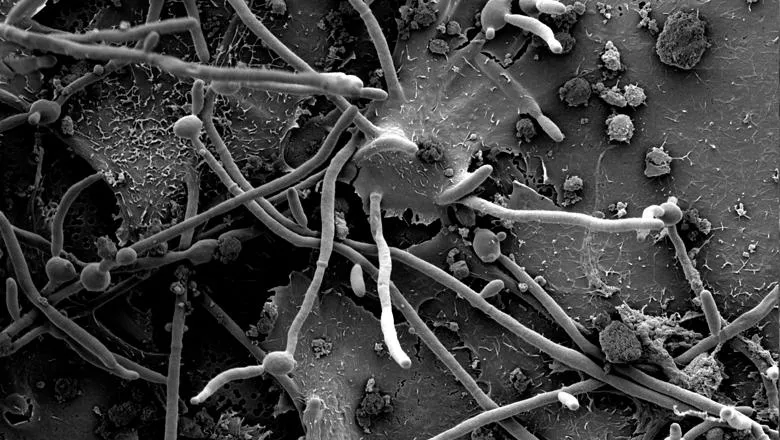24 May 2019
Complex mechanism of protection against Candida albicans fungus identified
King’s scientists identify complex mechanism required for initiating protection against a common fungus.

Professor Julian Naglik and his team at King’s College London have discovered that epidermal growth factor receptor (EGFR) proteins present on human epithelial cells (which line the mucosal surfaces) are central to initiating immune protection against the common human fungal pathogen C. albicans.
Candidiasis affects many patient populations and can lead to significant debilitating disease. The identification of this mechanism provides new understanding of the infection process that could aid the development of new medicines against this fungus. Their discovery has now been published in the journal Nature Communications.
Candida albicans exists predominantly as a harmless fungus contributing to the healthy microflora in the majority of the population. Under certain conditions however, C. albicans can cause damaging infections, particularly within immune compromised individuals, such as HIV or cancer patients undergoing chemotherapy. In such patients significant debilitating disease or even death may result as a consequence of infection. C. albicans primarily targets epithelia which are comprised of multiple epithelial cell layers and provide a protective barrier against external elements. This barrier forms the basis of skin and lines mucous membranes of the oral cavity, lungs, gut and vaginal tracts.
The researchers led by Professor Naglik have now identified the importance of the epidermal growth factor receptor (EGFR) during C. albicans fungal infections, which is detailed in their latest publication (Ho et al. 2019). The group finds that EGFR is activated following C. albicans infection, but it is the presence of candidalysin, a toxin released only by invasive harmful fungi, that is responsible. EGFR activation leads to a cascade of signalling events that results in the migration of immune cells (neutrophils) into the infected area in order to resolve infection.
The EGFR is a protein found at the surface of the epithelium which is predominantly known to support epithelial barrier integrity by promoting cellular growth and proliferation. The researchers now find that EGFR can also induce protective immune responses against C. albicans, highlighting a lesser known function of EGFR, in immune modulation.
Current anti-Candida treatments are limited by 2 main factors: toxicity and drug-resistance. Vomiting, nausea, shakes, fever and hair loss are among the common side effects of widely used, traditional therapies. A current and improved class of drug has been shown to circumvent these issues but increasing numbers of resistant fungi have resulted in poorly effective treatment in many patients.
The lead author of the study, Dr Jemima Ho, stated: “This new understanding of protective EGFR function may be used to improve future medications. By targeting the host cell pathways that candidalysin triggers, such treatments would be directed against damaging forms of C. albicans only, thus providing specificity and minimising toxicity”.
Additionally, therapies that target host proteins, rather than the microbe itself, are considered to be less susceptible to drug resistance issues.
Click here to return to the 2019 festive season update website.

